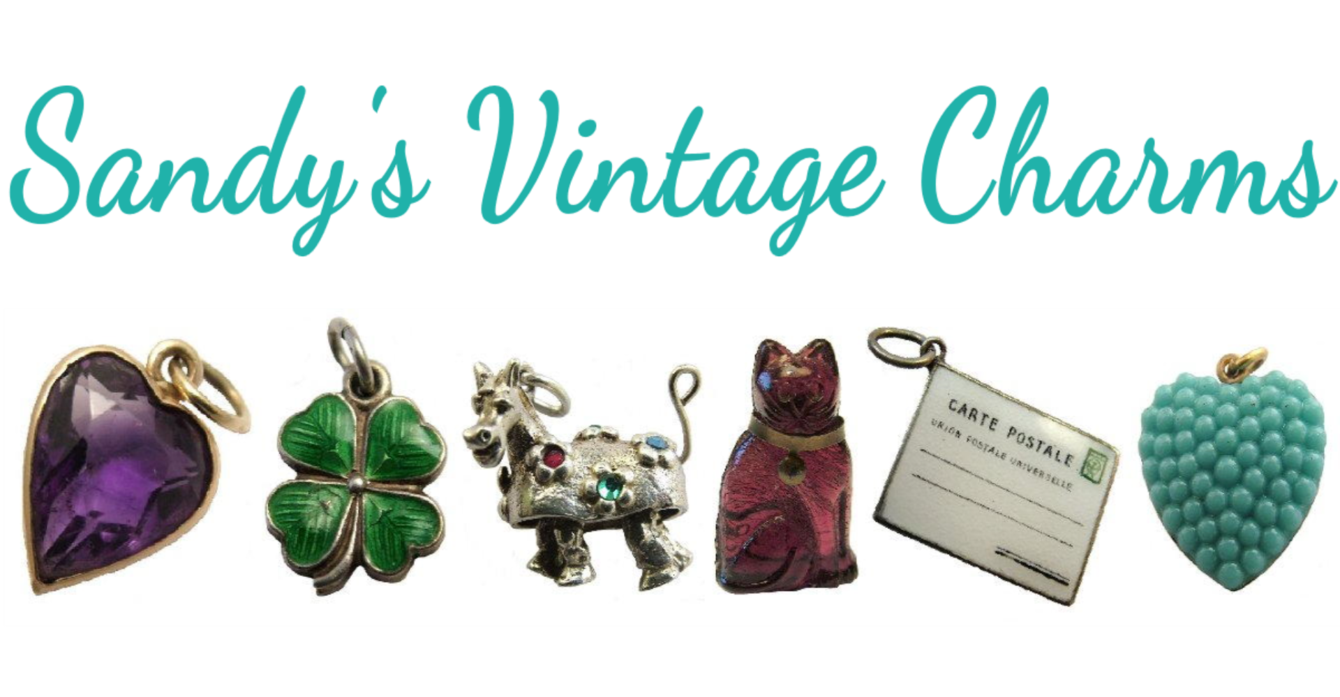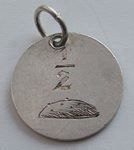ENGLISH LOVE TOKENS
The giving of an altered coin as a token of love is something that has happened in the United Kingdom since the 15th Century. The first love tokens were coins that had been bent twice so they could no longer be used as money. They were given as amulets and charms to prospective lovers. In the 17th century coins started to be engraved. It wasn’t so much about lovers but more about marking an occasion such as births, marriages and deaths. Nobody is certain why people started engraving these events on coins though some think it was a cheaper alternative to the expensive jewellery at the time. If you think especially of the mourning jewellery of the period, it would be beyond the pocket of most people. A coin, however, could be quite cheaply engraved and kept as a memento. All types of coins were used from the cheapest copper ones up to the most expensive silver and gold so there really was a coin available to suit all pockets.
The period that most interests charm collectors is the late Victorian era. From about the 1880's the small silver sixpences and three pence coins started to be engraved with names and initials. Before this period it had been the larger coins, shillings, florins and crowns worn as brooches or fobs on watch chains but because the fashion at the time was to wear small trinkets and charms on bracelets or albertinas (ladies watch chains) the love tokens got smaller.



Normally one side would be completely smoothed and elaborately engraved with either initials or a name.



Some families had an artistic member who could carry out the engraving themselves but most engraving was done by professionals either at a local jewellers or at an engravers. Coins could be picked at the jewellers and depending what your budget was would determine how much decoration you could have on the coin. Some would have very ornate backgrounds already engraved and just a plain cartouche in the middle where your choice of name or initials could be added like the ones pictured below.



Whole bracelets would be made up for a family with the Mother and Father, all the children, Grandparents, Aunts and Uncles and sometimes even the family pet.

Most English bracelets allow the coins to run freely around the bracelet like the one above but occasionally you will get one with fixed loops at intervals like the one below (like the American bracelets). Note the difference in the quality of the engravings between the two bracelets. The one above was obviously done by a professional whereas the one below was most likely done by a family member.

Pictorial love tokens are amongst the hardest to find as they were the most difficult to engrave. Most common are flowers, birds and hearts. The Alice token below has amazing detail. Each letter is on a sandwich board which is held by a man with a different kind of hat on. There is a fence in the background and pavement detail on the ground. All of that was engraved on a sixpence.



The skull and crossbones below is a particularly fine example.



Rarer still are rebus tokens where a picture is inserted instead of a word. The one pictured below on the left is a good example but I was never sure what it stood for. I could only come up with ’Half Baked’. The other one I was sure meant something but again not sure what. It shows a person on a bridge over a gorge with an umbrella turned inside out by the wind. It seemed such a strange picture to have on a love token but is beautifully engraved.

Some coins have pictures or words that make you wish they could talk. The one on the left says ‘Indiscreet Molly’ and you do wonder what she did to be given that name but to then have it engraved on a coin as well. The one on the right has a fabulous picture of the devil complete with the flames of hell. I don’t think this was done in a mean way as he has rather a cheeky looking grin on his face.

Some coins were set with a gem stone and not engraved at all. Victorian ones quite often have little ball decorations added to the edge of the coin as well. All kinds of stones were used from turquoise and amethyst through to agates and paste stones.



Sometimes the actual shape of the coin was changed. Half coins were popular with one half being engraved with the man’s name and the other half with the woman’s and they would keep each others half. There is also a nice example of a shamrock shaped one carved from an Edwardian coin and engraved ‘Mother‘.


Sometimes you come across unusual love tokens. Here we have pictured below XX Aloha, The Office Boy and Doctor.

The engraving and giving of love tokens continued right up to and throughout World War I. During the war many more tokens were made by soldiers in the trenches using French and Belgian coins. Some engraved their military crests whilst others just used dots to outline names or initials of loved ones. Quite a common practice was to engrave a hat on to the King’s head as seen below.

After the war love tokens were no longer fashionable and by the 1920's the practice of engraving coins had all but stopped.
VALUES
It is very difficult to value love tokens as so much depends on the popularity of the name or how many people want a particular set of initials. As a rough guide though initial love tokens are around £15-£20 though obviously more for extra ornate or particularly nice backgrounds. Individual initials are always more sought after than double or treble initials. Named love tokens is a huge field. Good names such as Jack or Bob are always popular and, again depending on the workmanship, should be around the £30-£40 mark. Girls names can be even more, especially for something like Kate or Emma, upwards of £80 for a superb example. Something like Ethel, Ida or Bert though can be hard to sell, maybe £20, a little more if it is nicely engraved. Pictorial tokens always demand high prices though flowers and birds can be picked up for around £30-£50 but something like the skull and crossbones or the devil expect to part with much more. Gem set coins have recently had a resurgence in popularity and good condition ones have increased in price so about £25-£30 on those.
(Values updated January 2016)

All images and text copyright Sandy’s Vintage Charms 2009.




